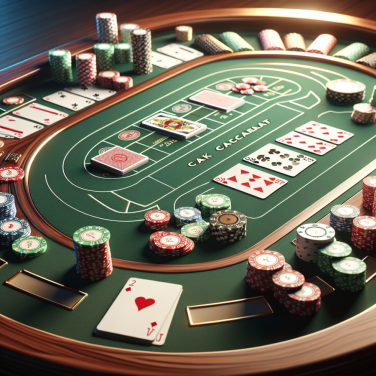Why the House Edge Matters: Fine-Tuning Your Baccarat Strategy
When refining your baccarat strategy, it's crucial to understand the concept of the house edge. This term refers to the mathematical advantage that the casino has over the players over time. Each game in a casino, including baccarat, is designed in such a way that the house is more likely to win in the long run.
In baccarat, there are essentially three bets you can make: on the Player, the Banker, or a Tie. The house edge differs for each of these bets. Betting on the Banker carries the lowest house edge, typically around 1.06%, because of the way the game rules are structured. Although there is a commission on Banker bets (usually 5%), it is still the most statistically favorable bet to make.
Wagering on the Player is the second-best bet in terms of the house edge, which stands at approximately 1.24%. The chances of winning are slightly lower than when you bet on the Banker, but it's still a reasonable choice, especially in games where the commission on the Banker bet is higher than the standard 5%.
The Tie bet has the highest house edge, usually around 14.36%. While the payout for a Tie bet is much higher than for Player or Banker bets (often 8 to 1), the probability of a tie occurring is relatively low. Consequently, betting on a Tie can be seen as a less savvy move if you're basing your strategy on mathematical odds.
Understanding the house edge helps in fine-tuning your baccarat strategy by guiding you towards bets that have a higher chance of winning. While you can never eliminate the house edge entirely, you can minimize its impact on your bankroll. Empirical knowledge of how often Banker, Player, and Tie hands win can guide you in deciding which bet you feel most comfortable with based on your risk tolerance and bankroll management goals.
For example, some strategies suggest alternating between Player and Banker bets in patterns, taking into account that Banker bets will win slightly more often over the long term, despite the commission. Others recommend sticking to one type of bet for the entirety of your session.
By considering the house edge in your baccarat strategy, you can also assess how long you want to play and how much you are willing to risk. Smart players always keep in mind that the goal is to maximize wins and minimize losses over time.
Read also:
Mastering the Baccarat Banker Role: A Guide to Success
Decoding the House Edge: Your Gateway to Smarter Baccarat Play
Baccarat is known for its glamour and simplicity, but beneath its surface, a critical concept influences every game: the house edge. This is the mathematical advantage that the casino has over the players, and in baccarat, it varies depending on the type of bet a player makes. To master the game and increase your chances of success, understanding and decoding the house edge is essential.
The house edge in baccarat comes from the way the rules are designed to favor the banker's hand slightly. Statistically, the banker's hand will win 45.86% of the time, the player's hand will win 44.62%, and 9.52% of hands will result in a tie. This discrepancy is where the house gains its edge.
**Banker Bet House Edge**
The most advantageous bet in baccarat in terms of house edge is betting on the banker. The house edge for the banker bet is typically around 1.06%. This edge accounts for the fact that the banker's hand has a better chance of winning than the player's. However, to compensate for this advantage, casinos apply a commission on banker bet wins, usually set at 5%. Despite this commission, the banker bet remains the most favorable in terms of house edge.
**Player Bet House Edge**
Opting to bet on the player's hand is the second-best choice. With no commission applied to wins on player bets, the house edge here is slightly higher than on banker bets, sitting at approximately 1.24%. Over the long run, this difference in house edge means that you may have slightly less chance of coming out ahead than if you consistently placed bets on the banker's hand.
**Tie Bet House Edge**
The tie bet offers the largest payout in baccarat, typically 8-to-1, which can be tempting for players looking for a big win. However, this bet also comes with a significantly higher house edge, often around 14.36%. That's a steep price to pay for the lure of an attractive payout. Given its high house edge, the tie bet is generally considered a less strategic wager and one that should be made sparingly, if at all, for those looking to play smarter.
**Side Bets House Edge**
Aside from the main bets, baccarat tables often feature a variety of side bets with different house edges.




